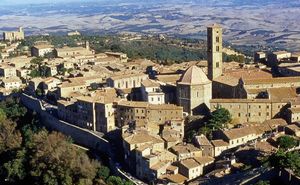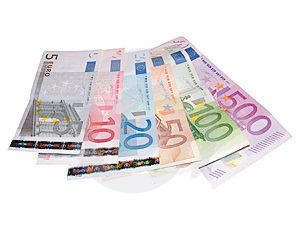This spring’s Modigliani exhibition at the Museo Vittoriano in Rome is a once-in-a-lifetime opportunity no art lover can afford to miss. About 100 works by the celebrated Italian painter and sculptor are on display, including oil paintings, water colours, drawings and one sculpture. This year sees the 100th anniversary of Modigliani’s arrival in Paris, the city which was to witness not only the explosion of his immense creativity but also the consequences of his self destructive lifestyle. On this historic occasion, prestigious international museums and galleries have lent the most acclaimed Amedeo Modigliani masterpieces to the Museo Vittoriano.
Modigliani’s short but intense life was characterized by poverty, pain and tragedy before his premature death at the age of 36. The French called him Modi, a pun on the French word maudit which means damned. An alcoholic and drug addict, he was known as a tortured man with an irrepressible need to express his creativity. His unique style and prodigious talent were not recognized until his demise. Mystery enshrouded Modigliani’s disorderly and tumultuous life as well. He was strongly attracted by the occult and he was said to have the disturbing power mentally to possess the model sitting before him. Whatever the truth, his beautiful paintings, sinuous nudes and trademark graceful, swanlike necks will be always admired. ‘I am the plaything of powerful forces that are born and die in me,’ Modigliani wrote. ‘Every obstacle we overcome increases our will-power and progressively renews our inspiration,’ was his most famous advice to his contemporaries. ‘Hold sacred everything that stimulates and excites your intellect. Try to provoke and renew all these stimulating forces which alone can push your intelligence to its maximum creative power.’
With his paintings, Modigliani paid tribute to the Renaissance Italian masters Giorgione, Tiziano, Botticelli and, at the same time, showed admiration for his contemporaries, Toulouse, Lautrec, Cézanne and Picasso. Modigliani and Picasso were mutually influenced by similar artistic movements but, despite some similarities, the former did not belong to cubism. Modigliani was an artistic maverick, an individualist who followed his own instinct and refused to join any movement. He chose to paint mainly portraits, a genre considered out-dated at that time, but his goal was not to commemorate prominent persons but to explore individuals. To use the painter’s own words, he called every individual ‘a universe’.
His delicately stylized and elongated faces are evidence of his lovefor sculpture and African art. His models are usually displayed alone, almost without setting or background, and the surrounding space has primarily chromatic value. By far the most striking features of Modigliani’s portraits are the eyes, their gaze is usually blank and without pupils; they are light blue, grey or green almond-like eyes that are inwardly focused. Their ‘introspective mode’, however, does not deprive the model of his or her personality. It only adds to his models’ almost omnipresent mysterious melancholy – a sentiment which surrounded the Italian artist’s life as well.
In 1984, on the centenary of Amedeo Modigliani’s birth, the entire world laughed at what was termed the prank of the century. Legend has it that the great artist discarded some of his aborted sculptures, throwing them into one of the canals that criss-crossed his native city, Livorno. During the celebrations, local authorities decided to dredge the canal into which Modigliani had allegedly thrown the sculptures. To everyone’s surprise, after some days of relentless work, three busts were retrieved from the leaden waters. The scandal lies in the fact that eminent art critics and renowned professors, perhaps blinded by their own enthusiasm, rushed to authenticate the pieces. Initially, the most preeminent Italian art experts were generally not able to discern the hand of multiple sculptors and jumped to the conclusion that the sculptures were unquestionably ascribable to the great Tuscan artist. The pieces later proved to be the work of contemporary amateurs.
The idea of throwing fake stone heads into the water during the search operations was not as original as it might have seemed. The episode of the false sculptures is usually remembered as a trick played by some smart students who longed to poke fun at illustrious experts but it was later discovered that students were only responsible for carving one of the three busts revived from the murky waters, which was later called Modì 2. Angelo Froglia, a docker and aspiring artist, sculpted the other two busts. He was so astonished when Modì 2 was found that he thought it was a genuine Modigliani. Mr. Froglia, who died prematurely at the age of 42, was thought to be part of a conspiracy set to exploit Modigliani’s fame. A criminal investigation ensued but the case was later dismissed.
The Modigliani exhibition in Rome is open to the public until June 20, 2006, from 9.30am to 7.30pm Monday- Thursday, from 9.30am to 11.30pm on Fridays and Saturdays and from 9.30am to 8.30pm on Sundays. The entrance fee is 9 euro. The Museo Vittoriano is located on Via di San Pietro in Carcere (Fori Imperiali).






